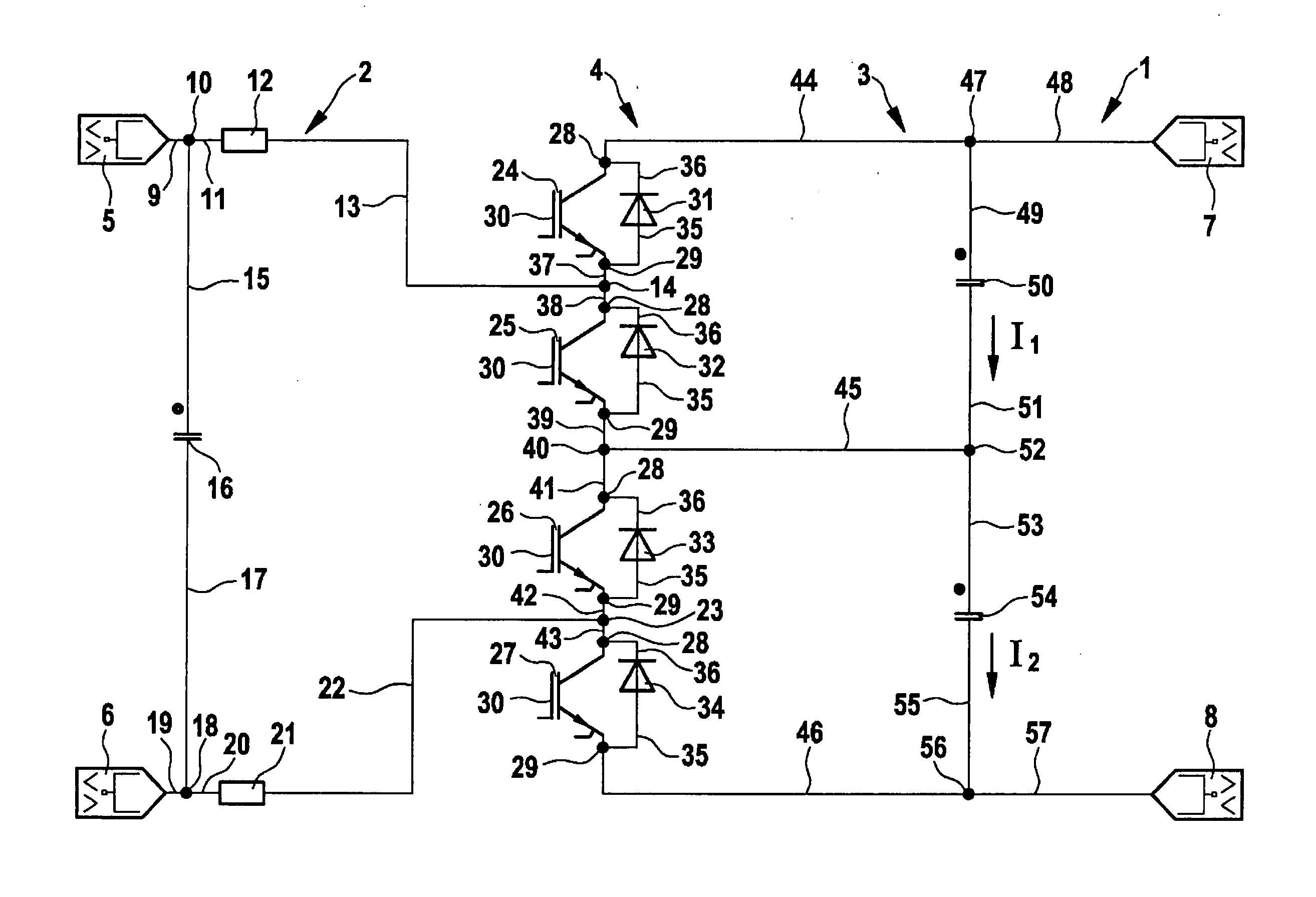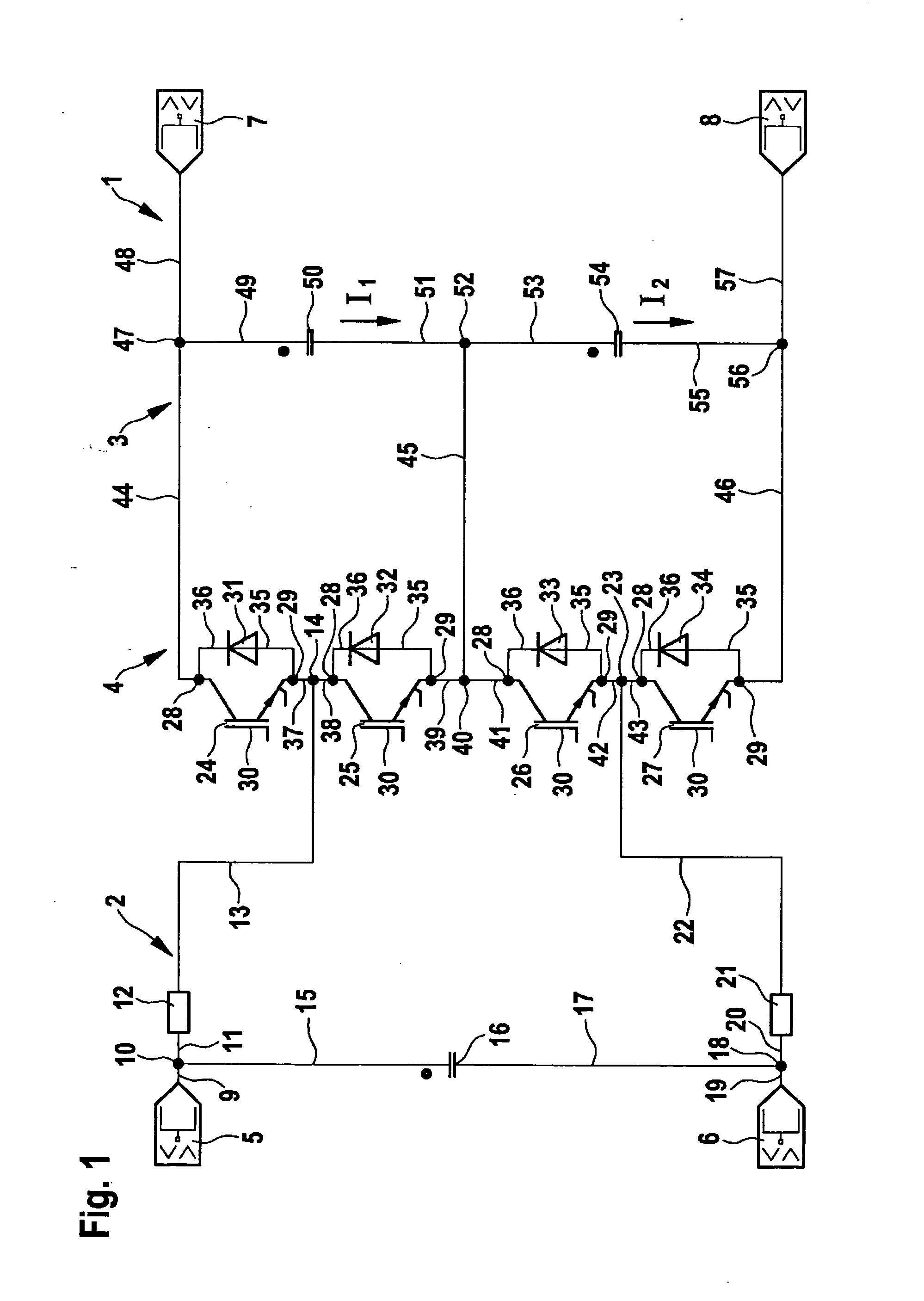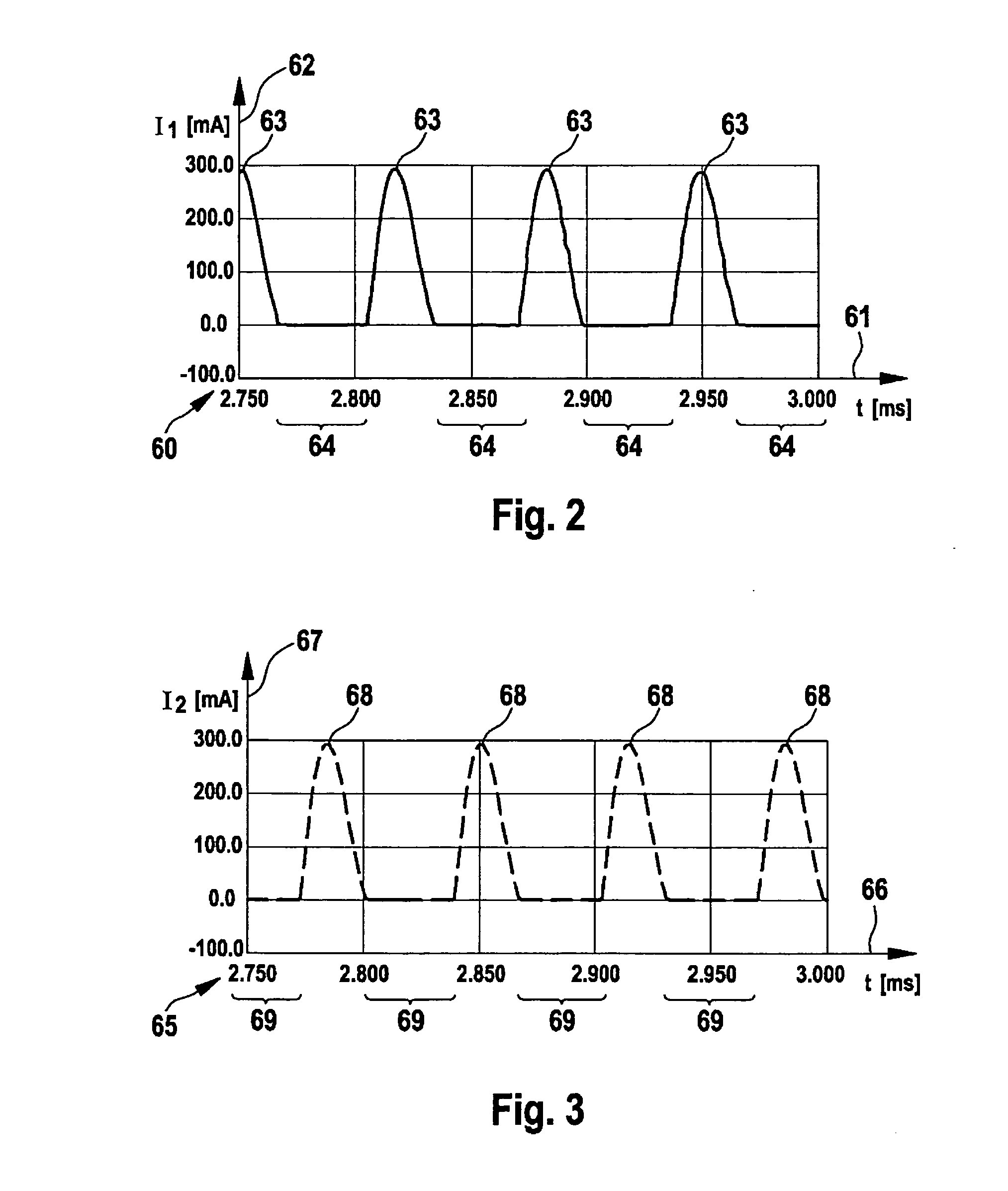Direct DC converter (DC chopper)
a dc converter and converter technology, applied in the direction of dc-dc conversion, power conversion systems, instruments, etc., can solve the problems of small losses on the switching device, and achieve the effect of saving installation spa
- Summary
- Abstract
- Description
- Claims
- Application Information
AI Technical Summary
Benefits of technology
Problems solved by technology
Method used
Image
Examples
Embodiment Construction
[0018]FIG. 1 shows a DC voltage converter 1 as a circuit diagram. DC voltage converter 1 has a primary side 2 and a secondary side 3, between which a switching device 4 is situated. DC voltage converter 1 has two input terminals 5 and 6, which connect a high voltage battery, that is not shown, to primary side 2, whereby a primary voltage is present at the terminals. On secondary side 3 an inverter, that is not shown, which is preconnected to an electric machine of the hybrid drive of a motor vehicle, is connected via two output terminals 7 and 8, at which a secondary voltage is present. Starting from input terminal 5, a line 9 runs to a node 10. From node 10, a line 11 runs to an inductor 12, which is connected to a connecting point 14, using a line 13. Starting from node 10, an additional line 15 runs to a primary capacitor 16, which is connected to a node 18 via a second line 17. Node 18 leads to input terminal 6 via line 19. Via a third line 20, node 18 is connected to an inducto...
PUM
 Login to View More
Login to View More Abstract
Description
Claims
Application Information
 Login to View More
Login to View More - R&D
- Intellectual Property
- Life Sciences
- Materials
- Tech Scout
- Unparalleled Data Quality
- Higher Quality Content
- 60% Fewer Hallucinations
Browse by: Latest US Patents, China's latest patents, Technical Efficacy Thesaurus, Application Domain, Technology Topic, Popular Technical Reports.
© 2025 PatSnap. All rights reserved.Legal|Privacy policy|Modern Slavery Act Transparency Statement|Sitemap|About US| Contact US: help@patsnap.com



